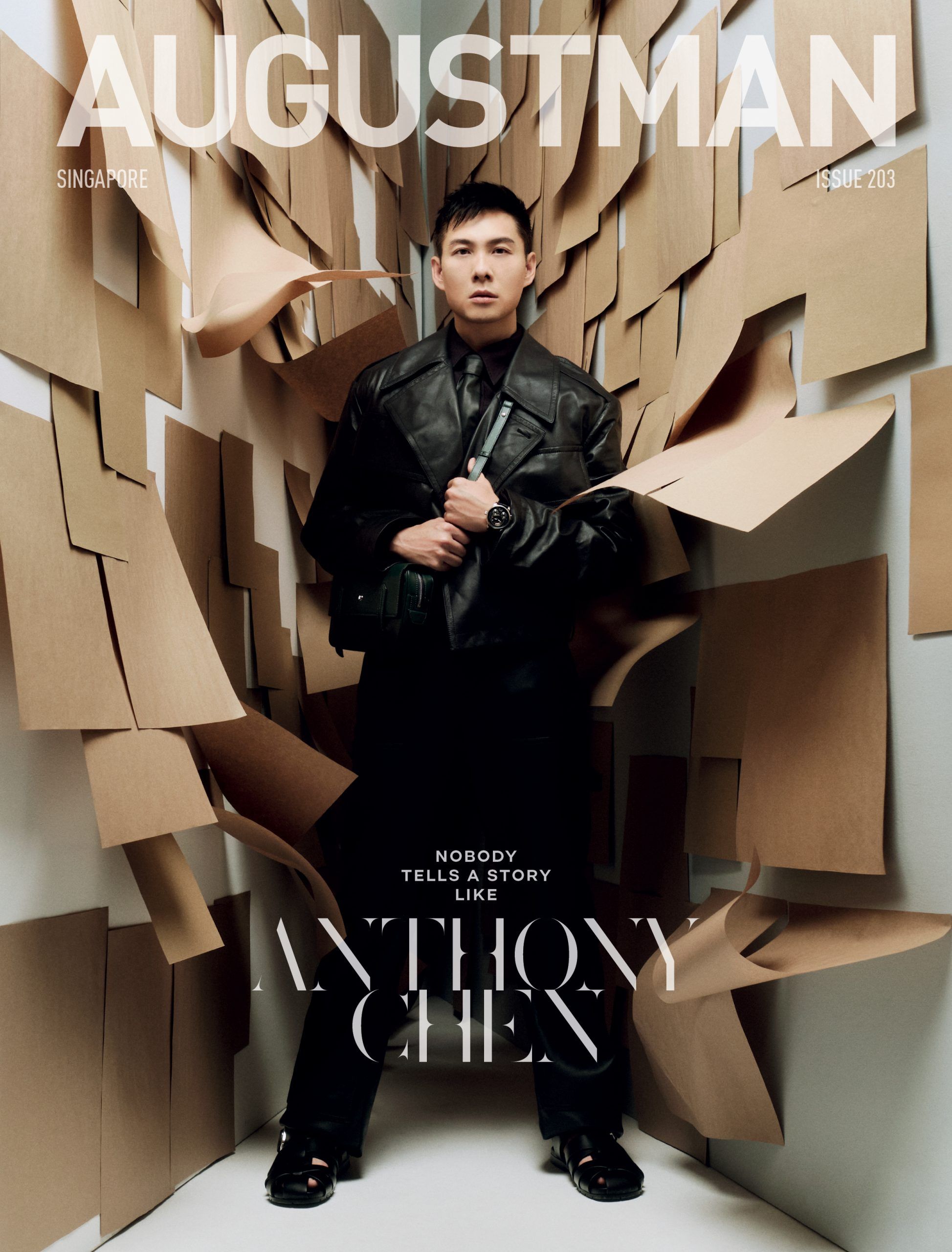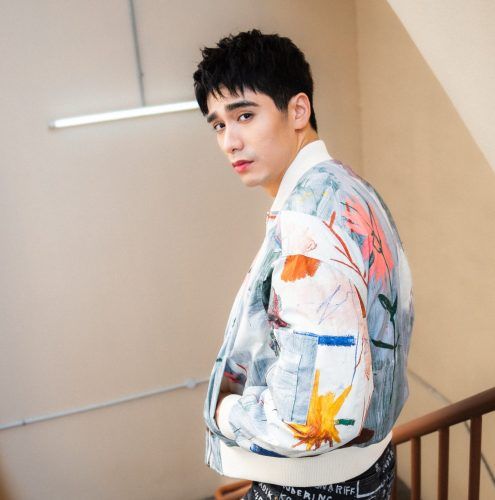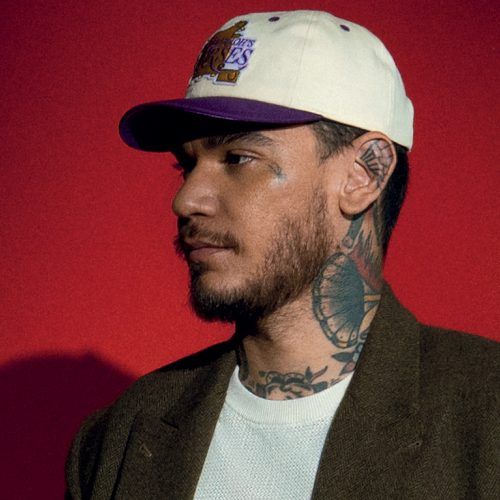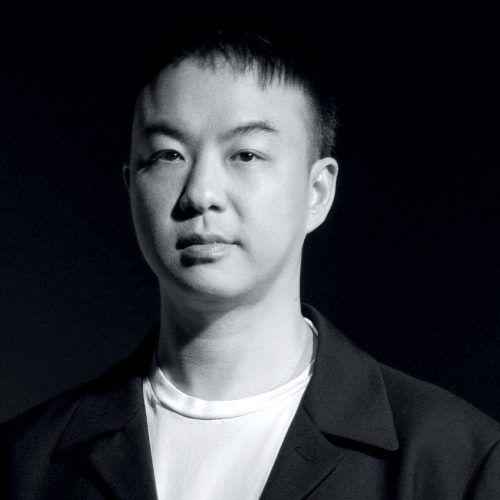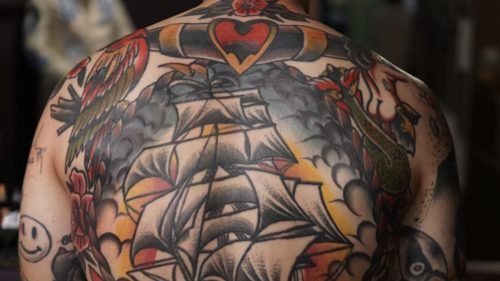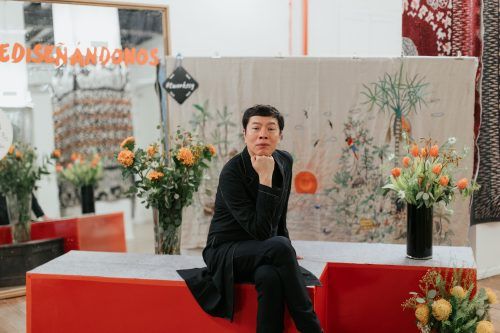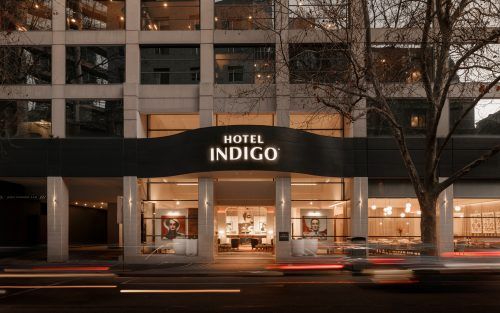Seven years ago, writer, art historian and broadcaster Katy Hessel visited an art fair and came to a crushing realisation: that out of the thousands of artworks on display, not one was by a woman. The numbing truth sparked a raft of questions: “Could I name 20 women artists off the top of my head? Ten pre-1950? Any pre-1850? The answer was no.”
Katy Hessel looked at the history of art from an entirely male perspective
Hessel realised she’d been looking at the history of art from an entirely male perspective. Hessel graduated with a BA in Art History, and along the way, had chosen to study venerated American painter Alice Neel, famous for her psychologically charged portraits from all strata – and ethnicities – of society. Alice Neel is sort of like anti-Alex Katz. And another realisation struck Hessel. “Neel was only recognised as a major painter by the art establishment when she was already in her seventies. That helped me notice the overwhelming under-representation of women artists – they weren’t in galleries, museums, or contemporary shows and they weren’t to be found in art history.” It’s remarkable to think that an art luminary such as George Baselitz, a huge star of the 1980s art market, could declare in 2013: “Women don’t paint very well … it’s a fact.”
Frustrated and angry the night after the exhibition in 2015, Hessel couldn’t sleep. “I typed the words ‘women artists’ into Instagram.” And guess what? “Nothing happened.” And so, @thegreatwomenartists was born. That title is itself an act of appropriation from two landmark pieces of art writing: Linda Nochlin’s ground-breaking 1970’s essay, “Why Have There Been No Great Women Artists?”, which was published at the dawn of the second-wave feminist movement. And EH Gombrich’s The Story of Art, which she says is a wonderful book but with one flaw. “His first edition in 1950 included zero women artists and even the 16th edition had only one.” Along the way, we make incredible discoveries. There’s Indian painter Amrita Sher Gil, whose vivid paintings “capture the electricity of colour”. She died at the age of 28. There’s Russia’s Natalia Goncharova, who coined the term “rayonism”; Marianne Brandt’s No 15 Kandem Table Lamp (1928), which was the most commercially successful object to emerge from the Bauhaus movement. There was Baroness Elsa von Freytag-Loringhoven. “The Baroness is not a Futurist,” Duchamp said of her. “She is the future.”

Katty Hessel: Delicious works
The baroness modelled for Duchamp and many posit that it was she, not he, who submitted the readymade urinal The Fountain signed R Mutt to the Society of Independents Artists’ salon in New York in 1917, of which Duchamp was president and subsequently resigned when it was rejected. Kessel suggests as much, though there’s little circumstantial evidence to warrant the claim as gospel. Sad to say, this writer had never come across Tarsila do Amaral, a woman Hessel calls “Brazil’s most famous artist”. See her delicious works Abaporu (1928) and Figura Só (1930) and be astonished by her flamboyance. Then there’s Augusta Savage’s The Harp. Commissioned by the 1939 World’s Fair as a sculpture that reflected the contribution to music by African Americans, it portrayed an elegant harpshaped choir of black children whose bodies, making up the instrument’s strings and wearing floor-length robes, stand in what appears to be the palm of God’s hand. The statue was 5 metres high and became a national icon in the press – that is, until it was destroyed soon after the fair, due to a lack of funding to pay for its storage costs. “It makes us think about the impact this piece could have had in the 20th century and beyond,” says Hessel. Meantime, we discover the first entire nude painted by a woman, Florine Stettheimer, and one-hit wonder Marie Bracquermond (a French female star of Impressionism whose jealous artist husband suppressed or destroyed her work).
And Jacqueline Marval’s Les Odalisques, described by writer Appollinaire as “an important work for modern painting” and shown alongside Picasso. Direct descendants of Spiritualism, cool cats Georgiana Houghton and Hilma af Klint, used séances as a new method of creating art, both guided by spirits as they drew – at the time this group was known as “Mediumistic” artists. Houghton produced ink and watercolour drawings brimming with multi-layered, scroll-like shapes and symbols. At the height of her production in 1871, Houghton self-funded Spirit Drawings in Water Colour at a private gallery on Old Bond Street, London, featuring 155 of her A4-sized drawings. Sadly, the show was misunderstood: Houghton was too far ahead of her time and was left almost bankrupt. She never exhibited again during her lifetime. Ironically, it took until 2016 for her next major solo show – to ecstatic reviews – at the Courtauld in London. And what of Venezuelan-American Pop artist Maria Sol Escober, aka “Marisol” (1930-2016) who merged hand-carved wooden figures with real-life objects, commenting on female identity. She arrived in New York in 1950, but soon swapped her Abstract Expressionist-style painting for Pop, referencing political subjects and celebrity figures (to wit: John F Kennedy and the British royal family). According to Hessel, “Marisol attracted enormous attention in the early 1960s when she was more famous than her friend Andy Warhol.”

Unlike male pop artists who favoured a “factory-like” approaches to their work with entourages of helpers and interns and hangers-on, Marisol hand-carved each sculpture alone, to emphasise the human aspects of figures that had been stripped of their identities. And which of us can honestly say we knew Buenos Aires-born and Trieste-raised Leonor Fini (1907-1996)? Arriving in Paris in the early 1930s, Fini was adored for her feline grace and Amazonian power and depicted herself and fellow artist friends, Meret Oppenheim and Leonora Carrrington, as commanding women in charge of their own lives. Fini’s Self-Portrait with Scorpion (1938) exudes sexuality and dominance, with the artist portraying herself in a proto-Punk, proto-feminist ripped dress, holding a silver glove (a typical erotic symbol) that hides a scorpion (alluding to sexual passion) within. She continued to paint until her death, making costumes for Federico Fellini’s 81/2 and ballgowns for Brigitte Bardot in the 1950s. There’s also a revealing section on two photographers, Lee Miller and Dorothea Lange, whose work – concerning the Second World War and the death camps of Buchenwald and Dachau – was only fully revealed later in their lives, or even after. Miller broke into Hitler’s Munich apartment with Jewish photojournalist David E Scherman and he photographed her sitting in Hitler’s bath in 1945. Lange was hired by the US government to photograph Americans of Japanese descent (one of which was the artist Ruth Asawa) who were sent to internment camps in response to the Japanese attack on Pearl Harbor in 1941. Although Lange was meant to remain neutral, she rebelled and her empathetic portraits sympathising with the persecuted Japanese Americans were so emotionally arresting that the US government censored and suppressed a majority and delayed release until long after the war had ended. In fact, until the 1980s.
And what does Hessel think of “Asian” artists? Of Cao Fei and the work RMB City (2007-2011), she writes: “RMB City feels akin to the all-consuming world of gaming, but the built landscape also points me towards art history. Having compared her virtual kingdom to a ‘traditional Chinese brush painting’, it’s as though Cao is doing what painters have always done: manufacturing semi-fictionalised scenes and settings with the same emotional impact, just using a more modernised medium.”

Of course, since Hessel began her book, there’s been a relative glut of female-only group shows, along with retrospective shows for women artists like Dorothea Tanning, Dora Maar, Eileen Agar and Lee Miller. “In the past decade,” she says, “we’ve seen a huge number of art-historical ‘corrections’ take place. From the numerous survey exhibitions dedicated to women sculptors, painters, abstractionists, or surrealists, such as Fantastic Women: Surreal Worlds from Meret Oppenheim to Frida Kahlo; We Wanted a Revolution: Black Radical Women 1965-1985; or Radical Women: Latin American Art, 1960-1985, to the first major solo shows of Pauline Boty, Carmen Herrera, and Hilma af Klint.” She remains positive. “I hope we’ll see more – and that my next art fair offers me a different experience from the one back in 2015.” “Progress is happening,” she says, despite still surprisingly grim numbers when it comes to female representation in leading galleries.
“Currently, women artists make up just 1 percent of London’s National Gallery,” she says. “The same museum only staged its first-ever major solo exhibition by a historic female artist Artemisia Gentileschi, in 2020”. In another – albeit belated – step in the right direction, the Royal Academy of Arts in London will for the first time host a solo exhibition by a woman (Marina Abramović) in its main space, next year. Earlier this year, Hessel conducted a YouGov survey to find out the British public’s knowledge of women artists. Results showed that 30 percent could name no more than three (83 percent of 18-to-24-years olds couldn’t even manage that), and more than half said they’d never been taught about women artists at school. However, she’s been encouraged to see a number of recent top-tier positions in museums taken up by women. “For the first time in history, women have taken the helm of the Tate, the Louvre, and The National Gallery of Art, DC, to name just a few.”

Katty Hessel concludes her book in the 2020’s
Hessel concludes her book in the 2020’s with a section she calls “The New Masters”, and singles out three young painters; Jade Fadojutimi (ecstatic, vivid, almost spiritual paintings); Flora Yukhnovich (playful painterly textures and a poignant commentary of the over-consumed and hyperdigitised world we live in today), and Somaya Critchlow (who paints and draws black female nudes in a style redolent of the Old Masters). Hessel expects their influence “will be some of the most impactful on the next generation and the future of art history”. Much like Hessel. And her @ thegreatwomenartists platform, which at time of going to print had 298,000 followers. And her latest Podcast on talented painter Louise Giovanelli (a recent White Cube signing) discussing photographer Francesca Woodman (who died in 1981 aged 22) as the artist she’d most like to meet. So … Monet who, exactly.
This story first appeared on PrestigeOnline Hong Kong



